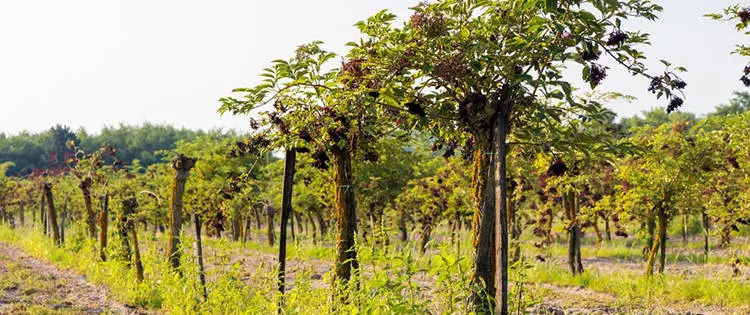Homestead farming is therapeutic, allowing you to cultivate a diverse range of vegetables and fruits.
Its true beauty lies in nurturing different plants and savoring the rewards they bring. While I have grown a number of orchards on my farm, that of elderberries is definitely my favorite for many reasons. Not only their taste is cherishable, but these exquisite berries also offer multiple medicinal benefits.
That said, if you are also considering growing an elderberry orchard on your homestead, you are at the right place. Here, I will be discussing everything from how to grow an elderberry orchard to what delicious recipes you can try with those berries.
So, let’s begin!
Elderberry’s Lineage to Folklore
Long before the elderberry shrub’s medicinal and culinary values were discovered, its association with spirituality was the talk of the town. Even I was surprised to learn that this deciduous plant is a prominent part of many myths and folklore, having a solid connection with spirits and fairies.
Another famous concept was not to burn the elderberry wood inside the house. It was believed to welcome the devil, bringing misfortune to the residents. However, the bottom line is that these claims have no truth to them.
In fact, elderberries hold multiple medicinal benefits, and there should be no reason not to grow its orchard in your homestead unless you don’t like the taste of the fruit.
Why Should You Grow an Elderberry Orchard
If you’re looking for a nutrient-rich fruit that is equally delicious and medicated, growing elderberry orchard on your homestead is the answer!
Besides being a delicious treat to your taste buds, elderberries can benefit your health in multiple ways. Here are some of its medicinal advantages:
- The berries are packed with Antioxidants, Vit A, B6, and C
- Strengthens immune system
- Fights cold and flu
- Helpful in joint pain, arthritis, and other inflammatory conditions
- Promotes healthy heart and reduces risks of cardiovascular diseases
- Enhances gut health and causes detoxification in the body
- Best for healthy skin
- Also helps in diabetes management
- Has antiviral properties
You can also use elderberries to make jams, jellies, syrups, pies, cookies, and more.
Related: Home Cleaning Mistakes That Can Cost You Your Health
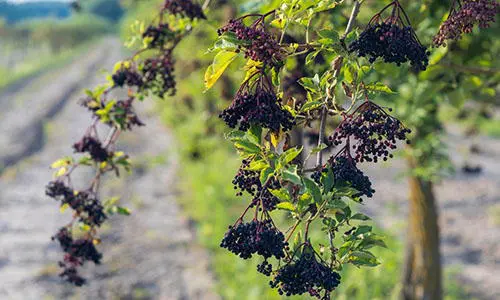
8 Tips On How To Grow An Elderberry Orchard
Growing an elderberry orchard is a laborious task, but it becomes worth it when you get to enjoy the delicious berries. Here are some tips for your guidance:
1. Choose the Right Variety
You can choose to grow several elderberry varieties on your homestead. Start by analyzing your farm’s climate, soil, and environment and select accordingly. The most common varieties are American and European black elderberries, also known as Sambucus Canadensis and Sambucus Nigra respectively.
Additionally, the purpose of growing the orchard also plays a crucial role in selecting specific elderberry species. For example, I wanted to enjoy culinary delights made from it, so I grew an American elderberry shrub, widely known for its tasty fruits. However, if obtaining its medical benefits is your goal, then European elderberry would be a perfect choice.
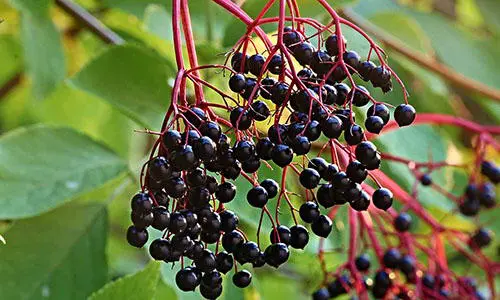
2. Take Care of the Planting Requirements
Elderberry plants grow best when certain conditions are fulfilled. Firstly, you need to look for a planting space that receives sunlight at least half a day for best results.
Next is the moist and well-drained soil, another basic requirement for growing an elderberry orchard. Also, the PH of soil mustn’t be neglected. 5.6 – 6.5 is the feasible range that favors the optimum growth of this shrub.
3. Ensure Proper Spacing
You also need to take care of proper spacing and arrangement. According to standard requirements, the space should be 6 to 10 feet within rows. While for adjacent rows, it has to be around 10 to 12 feet.
Taking care of this factor is essential for promoting air circulation, which reduces the risk of disease spread and ensures healthy growth.
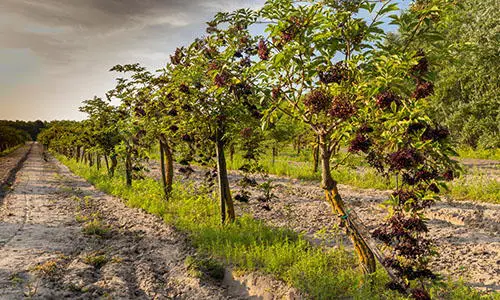
4. Care and Maintenance Are a Must
Care and maintenance of the orchard are important, particularly in its initial days of growing. You must ensure the shrubs get sufficient and consistent watering, as it happens to be their basic requirement.
Also, the young rootlings are more prone to losing moisture, so covering the plant with mulch works best. Additionally, it curtails weed growth, thus ensuring maximum contribution to rearing healthy elderberry plants.
Related: Gardening Mistakes That Might Get You Killed
5. Do Not Neglect Pruning
Pruning in the dormant season lets you shape the plant, enhances air circulation, and promotes robust growth. The ideal period to cut the dead and overgrown branches or stems of elderberry shrubs is between January and March, so don’t forget that if you want to savor the tasty berries.
6. Fertilize the Soil
Adding planting or mineral mix to the elderberry shrub berms can do wonders for fertilizing the soil. You can further enhance it by incorporating organic matter and fertilizers depending on the type of soil used.
For instance, the soil in my homestead was heavy and dense, so I used three shovels full of tree planting mix, and it gave the best results.

7. Pest and Disease Management
Pest and plant diseases are real challenges while establishing orchards. These can attack the vegetation, leaving them severely ill or dead. You must incorporate pest control and management practices that are organic but effective against such culprits.
8. The Right Time to Harvest Elderberries
It’s time to enjoy your esteemed harvest! From late summer to early fall, the period favors you to harvest and enjoy your homegrown delicacies.
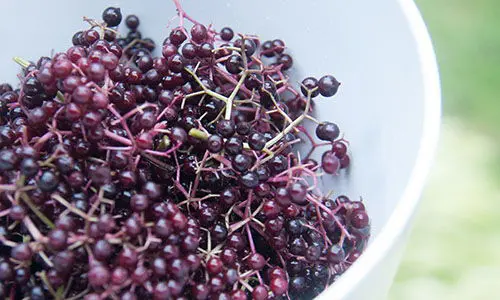
Utilizing Elderberries — What’s Cooking?
You can consume elderberries in many ways. Below are the recipes to try out and drool!
Elderberry Pie
Ingredients
- 2 ¼ Cups Flour
- 1 Cup Butter
- ½ Tsp Salt
- 4 – 6 Tbsp Cold Water
- Elderberries (Stemmed)
- 1 Cup Sugar
- 3 – 4 Tbsp Cornstarch
- 2 Tbsp Lemon Juice
Instructions
- Prepare dough for the crust by mixing flour, salt, butter, and cold water until crumbly.
- Bring sugar, water, and cornstarch to a boil in a pan, and add your freshly grown elderberries and lemon juice to it. Cook for 3 minutes.
- Set aside until cold. Roll out the crust dough and line a pan with it.
- Fill the pan with elderberry filling and cover with another crust layer.
- Seal the edges, brush the top with egg wash, and bake at 425 degrees for 30 minutes. Reduce the heat to 350 degrees for 20 – 30 minutes until golden brown. The delicious pie is ready to eat!

Immune Boosting Elderberry Tea
Ingredients
- 16 Oz Filtered Water
- 2 Tbsp Dried Elderberries
- ¼ Tsp Cinnamon
- ½ Tsp Turmeric
- 1 Tsp Raw Honey
Instructions
- Put all the ingredients in a saucepan and boil for a few minutes.
- Then, simmer the tea for 15 minutes.
- Let cool, strain, and serve it hot.
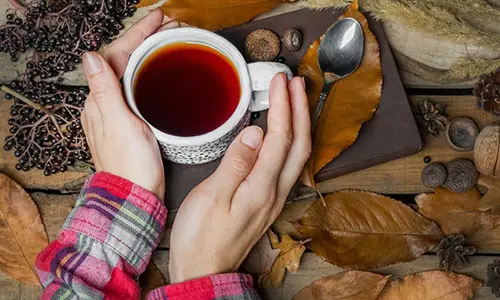
FAQs
Q: When are elderberries ripened?
A: Elderberries get ripened in late July to September in the US. You can identify them by observing their darker color and relatively plumper condition.
Q: Can you use elderberries every day?
A: Yes. There is no harm in consuming elderberries every day. In fact, they are packed with antioxidants that kill free radicals and benefit your body.
Q: What can we make with elderberries?
A: You can make a variety of culinary delights with elderberries. These include jams, jellies, pies, cake fillings, and more. Also, you can use them in tea, tincture, and for making elderberry syrups.
Growing an elderberry orchard on my homestead proved to be one of the best decisions I took. Now is the time to cultivate this shrub if you want to enjoy the delicious berries it bears. However, remember the process requires patience and dedication.
It might take some time for the orchard to start rewarding you, but trust me, it will be totally worth it!
You may also like:
If You See This Plant in Your Backyard, Burn It Immediately! (Video)
How to Grow Vegetables in Small Spaces

